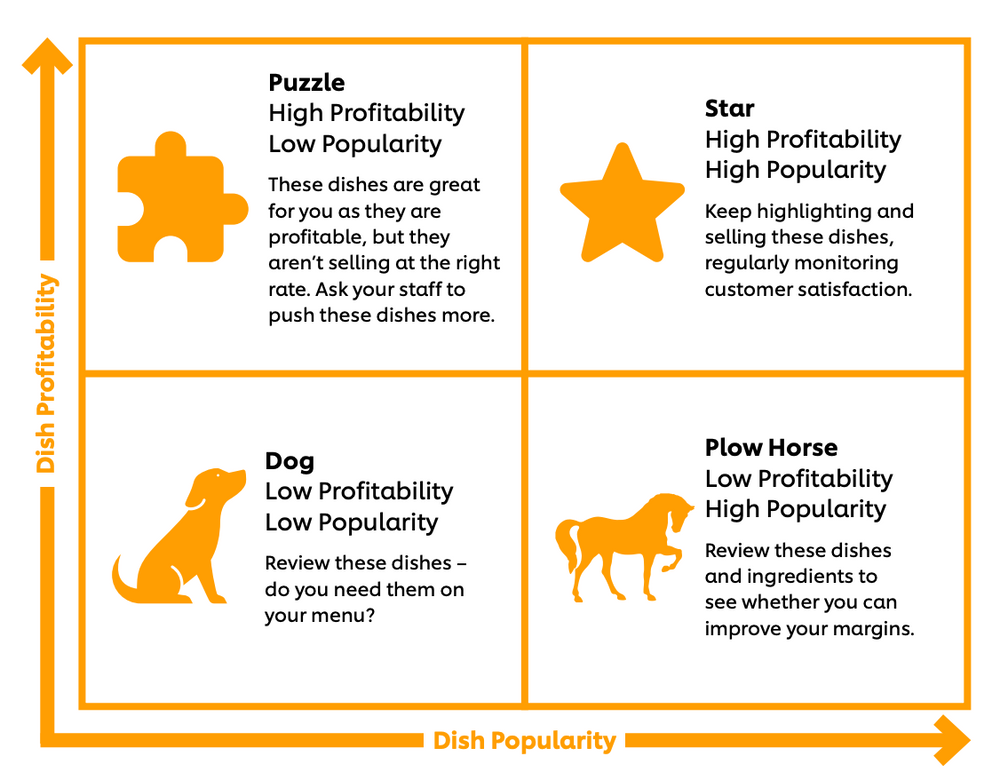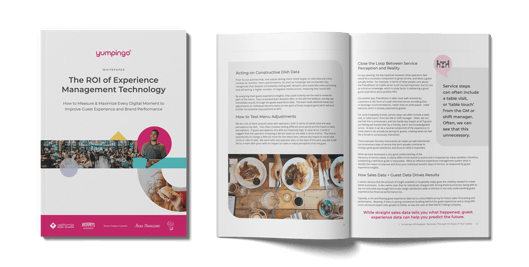The psychology of designing the perfect menu
POS data, human psychology and dog/star analysis can all help you create the perfect menu.
The restaurant industry has a new look – and however you want to slice and dice it, the recipe to each business’s vitality in this era requires a deep look inward. From the head chef to the line cook, back-of-house team members influence every element of how your brand executes on food and service.
Yes, they call it the ‘heart of house’ for a reason!
Managing food waste, adjusting menu pricing, and developing economies of scale are a few responsibilities your back-of-house team takes on. But all that activity is strategically transferred into a single source – the menu.
How often have you taken the time to really study the menu in a restaurant? Often, consumers will have a dish pre-selected before sitting down at the table. Or – they don’t even make it past the specials.
Human psychology exposes the thought process behind why people make the decisions they do. Understanding your target audience and what factors influence their behavior will help you position your offerings and business in a way to maximize investments and increase profitability.
As the restaurant industry adapts recipes, pricing, quantities and more to welcome back traffic, mapping the insights from human psychology to your sales data will be incredibly important to drive that menu development and innovation.
The next time you dine out, take a moment before you order and you’ll discover that designing the perfect menu is about more than just numbers.
Here are some top tips on using controlled costing, color theory, buzz words and more to create the perfect menu design for your restaurant.
Menu planning
Before you even start to create a menu you need to know what your customers want. That’s where your POS data can help you create a star/dog analysis of profitability and popularity.
A star/dog analysis is a method of structuring the data behind your menu’s performance into connected insights that shine a light on top performers and items that require your attention.

*Graph from Unilever Food Solutions
- Do you need to ditch the dogs?
- And can your staff start pushing the puzzle dishes?
- While there can be value in giving your guests something they didn’t know they wanted, can you tweak your plough horses to improve their profitability?
- Is it time to tweak your stars to make your menu planning more responsive to customer trends?
Studies show that diners take just three minutes to decide what they want to eat. Drawing attention to your most profitable dishes with creative accents, like colored or bold text or graphics means you have a better chance of capturing a guest’s focus within the three-minute time frame.
Drive ordering behavior with design
The layout of your menu can be a powerful influence on ordering behavior. With the right construction, you can capitalize on your stars and drive your customers to make more profitable decisions. A few best practices on designing your menu to drive ordering behavior:
Highlight the golden triangle
Our eyes automatically start in the middle of the page. Then they move to the top right corner before focusing on the top left. This is known as the Golden Triangle and it’s the area where you should put the least complex, best tasting or most profitable dishes on the menu.
Pay attention to order
Your guests will be drawn to either the top two or the bottom two dishes in any section of your menu. Make sure you position your star dishes in those prime spots on your menu.
Combat decision fatigue
Use the Rule of Seven to combat decision fatigue. Instead of presenting guests with seemingly endless choices, streamline each category to make the decision-making process easy and seamless.
Create a separate dessert menu
If you promise your guests a delicious dessert at the beginning of the meal, they’re less likely to order an appetizer or side dish. Factoring in the cost of the dessert can decrease spending elsewhere so keep sweet choices to a separate menu.
Use negative space
Our eyes are naturally drawn to blank space when there’s plenty of text, like on a restaurant menu, so use that negative space to your advantage. Position your dishes with the highest profit margin away from the rest of the text for maximum impact.
Get the pricing right
The driving factor for value determination on a restaurant menu is price. But there are strategies you can use to affect that perception without changing your pricing.
High-end restaurants use discreet pricing that allows your eye to gloss over the cost as quickly as possible. An example: using the same text color, alignment and font to create a seamless view of the menu or item. Avoid the perception of cheapness by pricing items in round numbers rather than .99.
Studies show that customers will pay significantly more for a menu item with a value add menu descriptor. Steer clear of superlatives and focus on certifications of quality like DOP Mozzarella, location including locally sourced items and artisanal descriptors like ‘hand tossed’ or ‘sun-dried’.
Another strategy used by high-end restaurants is to remove the currency signs from their menus. This de-emphasizes the cost of the items and the fact that your guests are spending real money vs investing in the dining experience.
Why is planning for the future important?
Everything on your hospitality menu should be designed to drive sales. Menu analysis and design help you understand your profitability and your business as a whole, keeping a finger on the pulse of your competition and the trends driving restaurant industry innovation.
Conduct an analysis of your menu every six to twelve months to identify what is and isn’t working for your culinary goals and adjust accordingly. Then start planning for your next review.
Using a reliable POS system to track your guest’s digital journey gives you the actionable insights your business needs to maximize profitability even when times are tough.
How often should you design a restaurant menu?
Whether you’re a chain or an independent restaurateur you should change up your menu at least once a year. This allows you to make sure that food costs are still aligned at the right percentage for managing your margins. Your dog/star menu analysis should help you weed out any dishes that aren’t selling well and streamline your hospitality menu design to engage your customers.
Ultimately, no matter how often you choose to update your menu, always ask your customers for feedback so you get it right.
At Yumpingo we’re dedicated to helping your brand get more happy guests. With our real-time data and actionable hospitality industry insights, you can improve the guest experience and sales, collect feedback and valuable POS data, and understand just what your customers are looking for every time they sit down to eat. From dish development to the taste of the food, Yumpingo can offer real-life insights into how well your menu is performing.
Find out how our customers are able to increase menu prices without any negative impact on customer satisfaction or loyalty by leveraging Yumpingo’s dish level insights. Download the ‘ROI of Experience Management Technology’ white paper to learn more.

Share this:
Subscribe to our Newsletter
You May Also Like
These Related Stories

Unlock valuable insights for your new openings
Yumpingo announces partnership with SevenRooms
